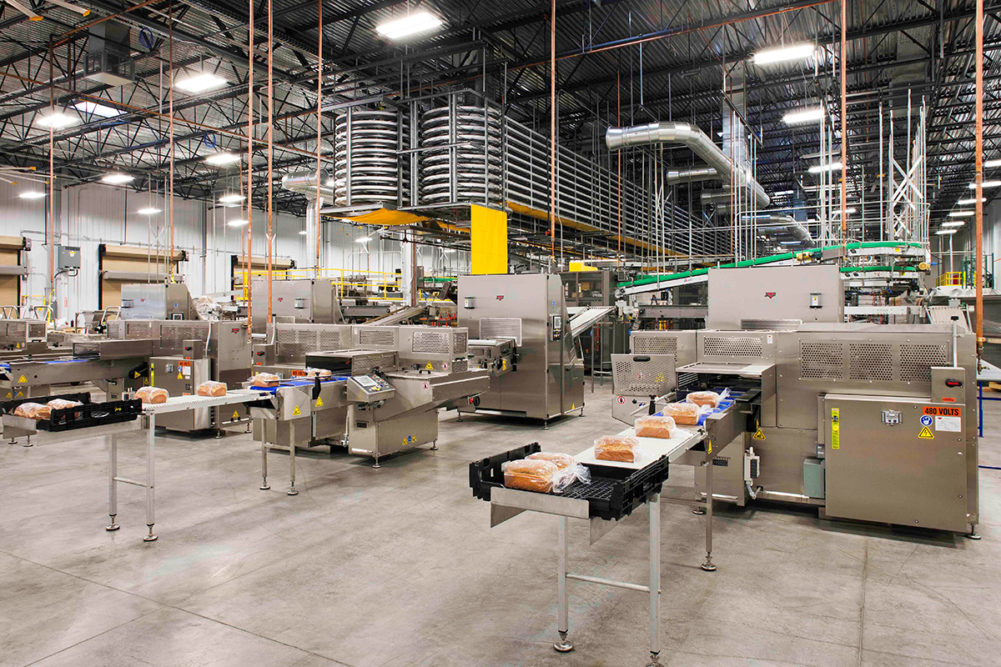In an era when saving the planet — and saving money — is more important than ever, grocery stores and their supplier partners continue to look for new ways to become more energy-efficient.
An increased focus on the use of natural lighting, including more windows and the use of skylights in facilities, has been one of the hallmarks of food facility designs in recent years, said Dave Watson, food, bakery and snacks engineering SME for design-and-build specialist The Austin Co.
“Heat recovery is another area that is being targeted, especially in heat related systems, including ovens and thermal oxidizers,” Watson added. “The waste heat is then utilized to preheat hot water systems and heat for proofers.”
Energy efficiency and sustainability play an important role in every project Austin delivers to a client.
That, Watson said, means a focus on energy-efficient lighting; HVAC systems that utilize CO2 versus traditional CFC, HFC and HCFC refrigerants; and energy-efficient motors and VFDs.
And while many companies in recent years have been forgoing LEED certification for their buildings, there are certain aspects of LEED that many companies still want to adopt, Watson said.
Examples include the ability to maximize natural light into the buildings and the installation of solar panels to provide a portion of the electrical load.
By now, most food companies and grocers have implemented what Watson characterizes as the “relatively easy and inexpensive” energy-efficient upgrades to their facilities — things like conversion to LED lighting and utilizing motion detectors to automatically turn off lighting in areas where no motion is detected.
“Energy management systems are now becoming more commonplace,” he added. “These systems monitor utility usage throughout the facility and have the ability to shed loads during peak hours and move the loads to lower off-peak electrical rates.”
AI’s role in energy efficiency
As AI becomes more commonplace, Watson said, energy management systems can utilize it to optimize the energy requirements of a facility.
“I believe that AI will play an important role in maximizing energy efficiency in food manufacturing facilities and grocery stores as the technology develops,” Watson said. “It will offer the ability to monitor all systems in a facility, and to make intelligent decisions rapidly.”
In the baking industry specifically, as reducing carbon footprints and sustainability programs continue to be more important to both food companies and their shareholders, many baking companies, Watson said, are looking to switch to electric and hydrogen fired ovens, which offer a sustainable alternative to traditional natural gas-fired ovens.
“While these technologies are in the early stages of development, they no doubt will play an important role for food companies looking to reduce their carbon footprint.”
The regulatory landscape governing the energy efficiency of food facilities varies widely from state to state, with California in the lead regarding regulatory requirements, Watson said.
There are still many state incentives available to companies that are looking to upgrade to more efficient systems. Solar power systems, as well as wind power technologies, can often take advantage of not only state but also local incentives.
In addition, power purchase agreements (PPA) are often a way to utilize green technologies while forgoing the up-front costs to install the systems, Watson said.
In a typical PPA, a third party energy company covers the installation costs for the systems, and the cost is then amortized over the life of the system through a negotiated rate.

